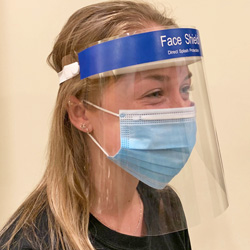In my opinion, the size of the spill is less of a determinant than the ability of the responder to protect themselves from exposure to the material spilled,
especially from inhalation. I find that most lab researchers are pretty aware of liquid contact, but usually overlook the inhalation hazards. Thus, if it can’t be cleaned up in a few seconds with a few paper towels and the cleanup supplies moved to a hood,
it’s probably better to bring in someone who is trained to use the appropriate respiratory protection.
At my company we put a 4L limit on spill cleanup in general (for anything other than water or benign aqueous spills), since people can’t determine %LEL without
a meter. However, we also ask people to call for help for smaller spills where they can’t protect themselves as outlined above.
Steve Arvedson
From: DCHAS-L Discussion List [mailto:dchas-l**At_Symbol_Here**MED.CORNELL.EDU]
On Behalf Of Phil McKittrick
Sent: Tuesday, October 14, 2014 1:37 PM
To: DCHAS-L**At_Symbol_Here**MED.CORNELL.EDU
Subject: [DCHAS-L] How big of a spill before you call for help?
Someone asked me how large of a spill they could clean up themselves without calling our internal emergency spill team. I realize it depends a lot
on what was spilled, but let's assume it is something nasty like methylene chloride or benzene. Is there a good rule of thumb for how large of a spill (outside a hood) can be cleaned up safely?
